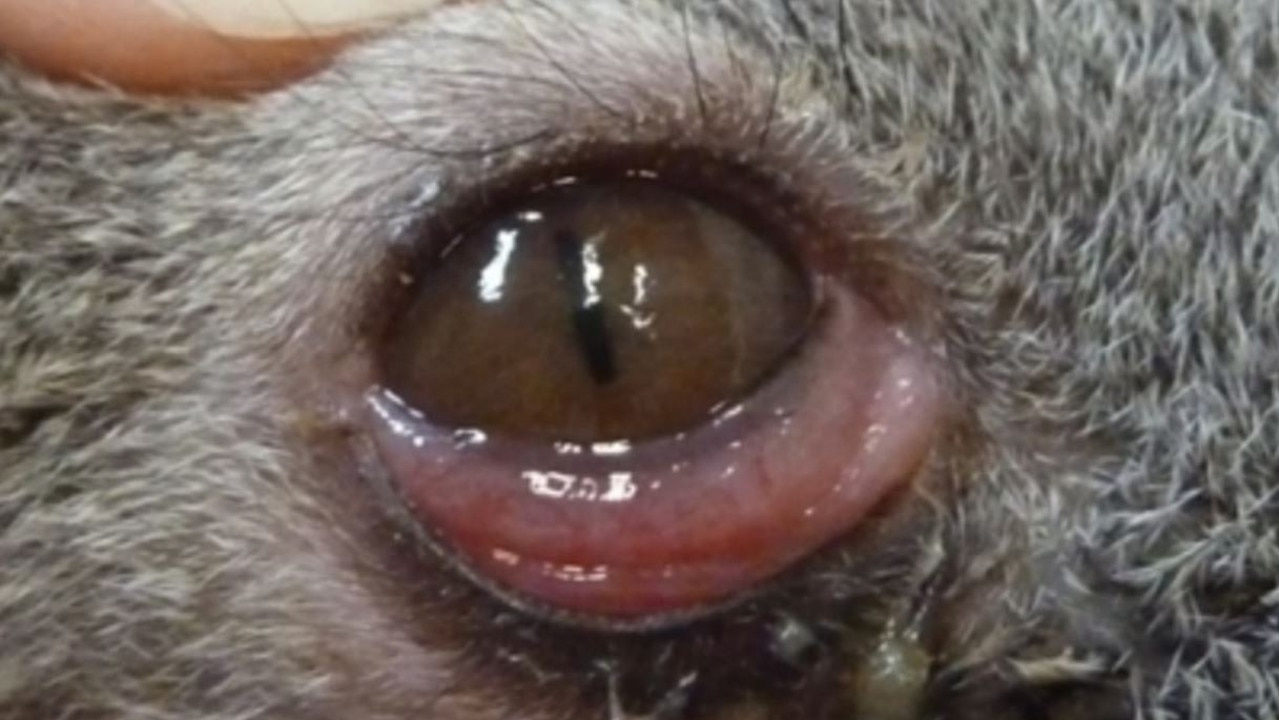Acne cure 97 per cent effective at treating chlamydia in koalas
It’s been a terrible time for the animals with their numbers decimated by the summer bushfires. But a new discovery is offering some hope.
A single antibiotic commonly used to treat skin conditions could be the key to saving koalas from a devastating epidemic that has infected most of the threatened animals.
By now you’ve probably heard pretty much all koalas have chlamydia (and some wild populations have a 100 per cent infection rate).
While it might be funny to joke about koalas having an STI, it’s less funny that the infections can cause them blindness and bladder inflammation, as well as making them die sooner and stop them from reproducing.
RELATED: Baby koala killed by off-leash dog

RELATED: Black ‘panther’ caught on video in Sydney
RELATED: Ocean left blood-red in annual slaughter
Obviously neither of these is good for koala populations already under threat from a loss of habitat during the summer bushfires.
But hope is on the horizon after scientists discovered an antibiotic frequently used to treat skin conditions is also very effective at treating chlamydia in koalas.
The antibiotic doxycycline was effectively able to cure koalas with chlamydia (or bring their infections under control) in 97 per cent of cases in a study conducted by Australia Zoo Wildlife Hospital and the University of the Sunshine Coast.
Between 2013 and 2017, 2348 koalas were admitted to the Beerwah zoo’s hospital, and more than 1000 of them were there because of chlamydia.
Doxycycline often comes in pill or tablet form for human consumption to treat acne and rosacea, as well as urinary tract infections and STIs like gonorrhoea and chlamydia.
The drawback is that it was quite painful for the koalas to receive treatment when researchers injected the drug into the muscle, leading researchers to dilute the dose with saline and inject it under the skin instead.

RELATED: Cow caught on camera at cop shop
A total of 86 koalas were treated in the study (six of them needed to be treated more than once).
A cure rate of 97 per cent helped doxycycline beat out other candidates including chloramphenicol (81 per cent), enrofloxacin (75 per cent), florfenicol (66 per cent) and azithromycin (25 per cent).
It also has the added advantage of being a long-acting drug, making it easier to treat koalas in the wild because they only need one dose a week.
Researchers have been searching for an effective way of treating koalas with chlamydia, but they’ve run into roadblocks.
Firstly, the animals live in the wild and aren’t going to take themselves to the vet, so by the time a koala’s infection is identified it’s usually reached a “chronic” stage, but there’s also no way to identify how long the koala has been infected.
Koalas also have a very high-fibre diet, so some antibiotics can be excreted before they can be effective.
Other antibiotics used in the past upset gut microbes and ended up killing the koalas.
The antibiotic chloramphenicol was effectively used for a little over two decades (though occasionally caused bone marrow hypoplasia after prolonged use), but the drug is no longer commercially available, prompting researchers to look for an alternative.
The peer-reviewed research is published in the Public Library of Science.



